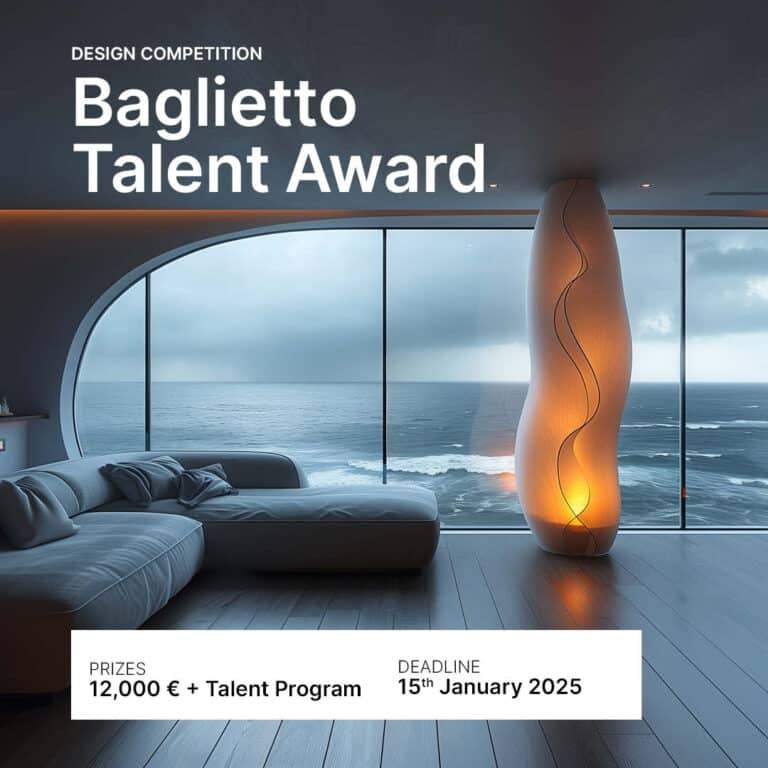Designing the Resilient Desert City
Designing the Resilient Desert City
Abstract
Urban desert cities and their communities face a hostile future.
The City of Tempe, one of the densest communities in the Phoenix Metropolitan Area, is already a leader in climate action. The City’s 2019 Climate Action Plan (CAP) and subsequent CAP Update in 2022 chart a more sustainable, resilient path for Tempe’s future, with strategies proposed to reduce greenhouse gas and carbon emissions, increase resilience to extreme heat, raise green construction standards, and develop a multi-modal transit network. The adoption of these plans has led to becoming one of 122 global cities to be recognized for climate action leadership by CDP in its 2022 Cities A A-ListYet, there is still work to be done.
Change at this scale cannot happen overnight. Many of the strategies outlined in the CAP remain on paper only. The Sustainability and Resilience Office partners with City departments, non-profits, businesses, academia, and community-based organizations to build awareness and support for these actions to be codified by the city council, funded through the city budget, and finally implemented in the community. The opportunity to implement these initiatives and standards is now, especially as our landlocked city has a growing population and experiences a rapid development in our built environment. Also, The Sustainability and Resilience Commission desires to create more awareness around the City’s sustainability goals and to help residents, businesses, city staff, and partners visualize what their future city may look like if it is to reach the CAP’s aspirations.
The time is now to design the resilient communities we need in the future so that we can see the path forward.
Goals of the Competition
- Through the AIA Phoenix Metro 2023 Design Ideas Competition and in partnership with AIA Phoenix Metro and ASLA Arizona, the City of Tempe seeks:
- To visualize a sustainable, resilient development in the urban desert for the City of Tempe, its residents, and the world at large using the strategies and goals described in the City of Tempe’s CAP.
- To show the transformative possibilities of the CAP through physical interventions of architecture, landscape architecture, and master planning, ensuring the City and its residents will have a greater understanding of the potential impact of the CAP.
- To inform future policies and development within Tempe and pilot projects by the City through a vision that responds to our climate reality with optimism, action, and a focus on the local community.
- To change how we look at the design of our cities by seeing the built environment as an opportunity for creating resilient, human-centric places, meeting the effects of climate change with inspirational solutions instead of despair, and making a more equitable society through our architecture.
Brief
How can architecture embody climate resilience, manifesting as a community act by reinforcing sustainability and equity through the built environment?
Entrants will develop a concept for the redevelopment of a chosen site in Tempe. All competition entries must include a community Resilience Hub, incorporate green stormwater infrastructure within the overall master plan of the site, and conceptually meet the requirements of the International Green Construction Code (IgCC). Entrants may choose to include any additional programs or policies beyond the required elements listed in this brief. Entrants are encouraged to incorporate an additional program that serves community needs and further supports the strategies and goals within the Tempe Climate Action Plan. A successful entry will incorporate the various requirements into a high-performing, holistic design solution that is appropriate for an urban desert city.
Resilience Hub
If disaster strikes, residents must have safe and cool locations to find shelter, and Tempe is building a network of these hubs throughout the city. Moreover, A resilience hub is a community-serving facility that supports residents and coordinates resource distribution and emergency services. These hubs can be equipped with photovoltaic panels and storage batteries to ensure residents can access power and cooled spaces in major heat events. Entries must include an indoor space for community response that is flexible to provide other community functions outside of heat crisis events.
Green Stormwater Infrastructure (GSI)
Green stormwater infrastructure (GSI, also known as low-impact development or LID) is a sustainable approach to stormwater management that utilizes the landscape with native Sonoran Desert ecological plant communities and natural processes to absorb storm runoff and mimics the natural hydrology of an area. This can further reinforce resilience by supporting natural biodiversity, reducing the heat island effect, and creating cooler micro-climates with shade from tree canopies and vegetated surfaces. Entrants are highly encouraged to integrate GSI/LID seamlessly into the site and/or building design. Entries must show a conceptual approach to using on-site and off-site stormwater.
International Green Construction Code (IgCC)
The International Green Construction Code (IgCC) is a set of guidelines that aim to improve the sustainability and environmental performance of buildings during their design, construction, and operation. The code addresses ways to decrease energy usage and carbon footprints, as well as responsible site development, indoor environmental quality, water conservation strategies, and energy-efficient building performance. Entries must show through drawing notes or a project narrative how the design intends to meet aspects of the IgCC. Entrants may determine the most important aspects to identify.
Site & Resources
Site
The competition site is located in Tempe, Arizona, along Apache Boulevard between Dorsey Lane and Chief Jones Way. The site is comprised of three lots with the following parcel numbers (APN): 132-62-148, 132-62-149, and 132-62-005B. Moreover, Entrants may use one, two, or all parcels as part of their design concept. Two existing buildings on the project site may be maintained or removed as part of the design concept.
Resources
Site Surveys for Parcel 132-62-005B and Parcels 132-62-148 and 132-62-149
2019 Tempe Climate Action Plan and 2022 Climate Action Plan Update
Urban Sustainability Directors Network: Resilience Hubs
City of Mesa LID Toolkit and City of Tucson LID and GI Guidance Manual
International Green Construction Code
AIA Framework for Design Excellence
Awards & Recognition
Winning entries and honorable mentions (maximum of two per category) will be selected by the Competition Jury and will be recognized as described below.
Professional Category Awards & Cash Prizes
Winning Entry $4000
Honorable Mentions $1000 each
Student Category Awards & Cash Prizes
Winning Entry $1000
Honorable Mentions $500 each
Publication of Competition Entries
Furthermore, All entries will be on digital display at the competition awards ceremony on August 17, 2023. Competition boards of winning entries will be printed, mounted, and displayed at the competition award ceremony at no cost to entrants. The City of Tempe, AIA Phoenix Metro, and ASLA Arizona may choose all or a portion of the entries for public exhibition at their discretion. This may include publishing entries through the AIA Phoenix Metro competition website, AIA, and ASLA email newsletters.
The City of Tempe, AIA Phoenix Metro, and ASLA Arizona may also seek to publicize the competition winners through online and print media outlets and hold the right to reproduce project imagery at their discretion. Entrants maintain all copyright of their work. Also, The City of Tempe reserves the right to utilize all or a portion of the entries for general marketing of the Climate Action Plan and to inform future developments proposed by the City of Tempe.
Awards Disclaimer
The Competition Jury may choose, at the sole discretion of the Competition Jury and AIA Phoenix Metro as the competition organizer, to award fewer prizes than listed in the Professional Category Awards & Cash Prizes and Student Category Awards & Cash Prizes sections above.
Registration
Registration Form
The online registration form is on the AIA Phoenix Metro competition website. Upon registration, entrants will be assigned an identification number to include on the submission board. The assigned identification number should be included in all correspondence and should be the first two characters in the title of the electronic submission and the subject line of the submission email. Only one member of a team must be identified when registering a new competition team. All members of a competition team must be identified upon submission of the competition entry.
Entrant Requirements
The competition is open to everyone and anyone who wishes to enter.
An entrant may be an individual or a team, but teams may not exceed seven (7) members.
Entrants can have teams with varied members. Including architects, landscape architects, engineers, ecologists, urban planners, local community members, etc.
AIA Arizona and AIA Phoenix Metro staff, members of the Competition Committee, and members of the Competition Jury are not able to participate.
Submittal Requirements
Entrants must submit their competition boards as either: One (1) 36” x 48” horizontal (or landscape) board. Or Two 24” x 36“ boards to be used freely to express a distinct physical design concept and visual narrative. All information regarding the competition entry must be on the competition board(s) for consideration.
Moreover, Provide a clear and simple narrative describing the design and the entrant’s approach to how the prompt was addressed. The response must not exceed 500 words and must be in the board(s). The text must be legible at full resolution of the board.
The competition board(s) must be delivered digitally by the submission deadline listed in the Competition Schedule. Entrants must submit their competition entry no later than 11:59 PM on the day of the Submission Deadline via email. Also, The submission can be an attachment to the email or through a file transfer link.
Entrants may submit a video or VR file associated with their entry. And these files will not be considered by the Competition Jury to determine winning entries. These files can further illustrate a design concept during the award ceremony or subsequent community presentations. Also, Entrants submitting videos may upload their videos to a video streaming service or via a file transfer link.
Competition Regulations
This is an anonymous competition and the registration number is the only means of identification.
The official language of the competition is English.
The registration fee is non-refundable.
Furthermore, AIA Phoenix Metro, as the competition organizer, reserves the right to modify the Competition Schedule if deemed necessary.
Participants retain all copyrights of their designs. Also, Participation assumes acceptance of the regulations.
Lastly, Download the information related to this competition here.
Finally, Read more on Archup:







